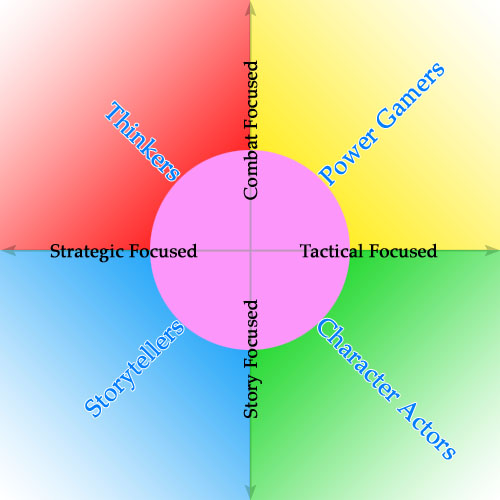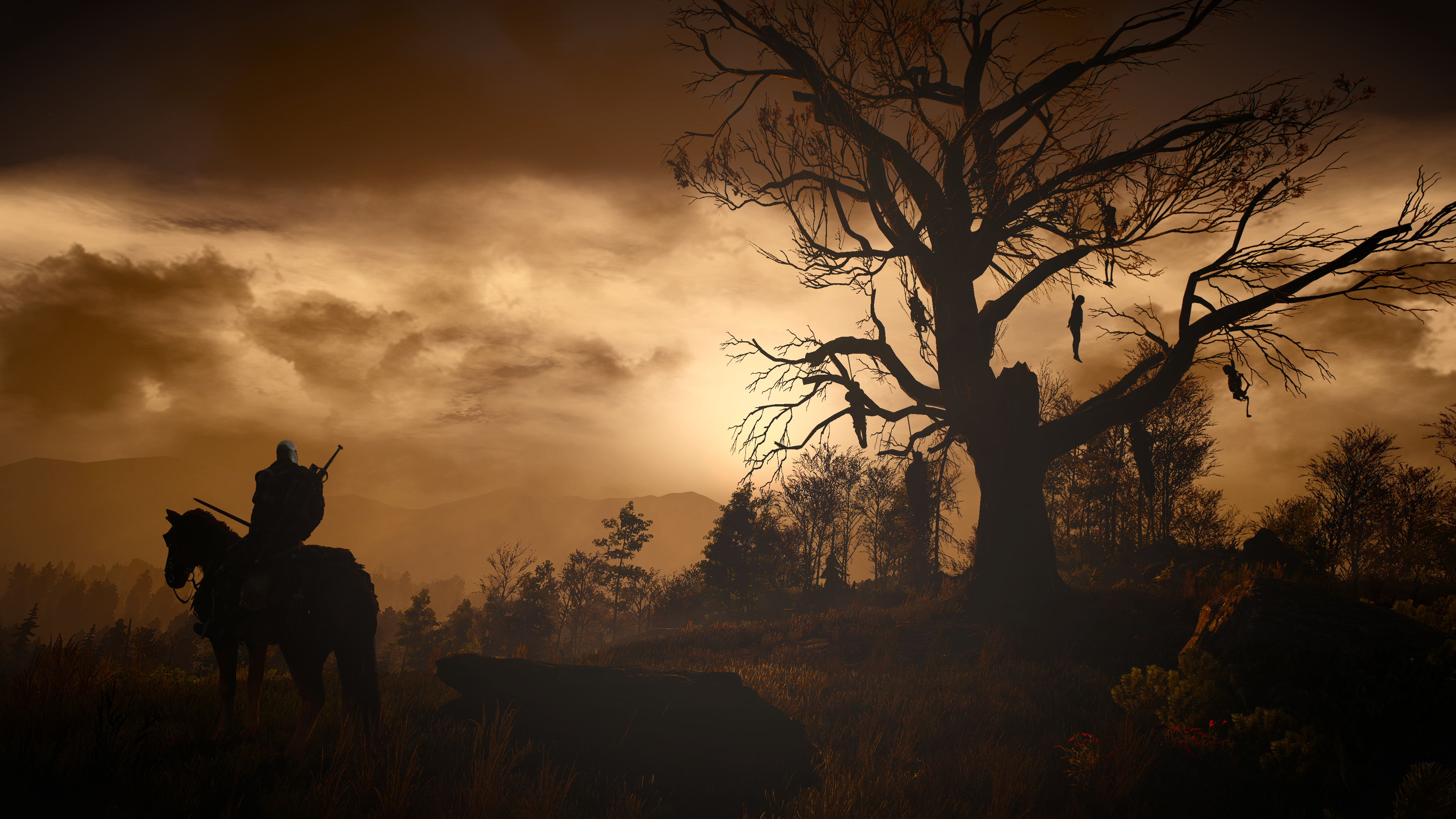I had no real interest in watching The Last Witch Hunter, but I might give it a chance after this fantastic D&D session! (Source: Vin Diesel, Nerdist, and Geek and Sundry’s critical role battle in D&Diesel)
Category: RPG
Some Thoughts on Leaving a Lasting Impression
 I’ve been playing tabletop RPG’s with my friends for over 20 years. In that time some people have come, some people have gone, but the one thing that remained the same is that we’ve always been keen on good, solid, collaborative storytelling. We’ve played so many different campaigns — predominantly Shadowrun, D&D and Call of Cthulhu, with some small jaunts into other games like Vampire: The Masquerade and Eclipse Phase, and alternative Shadowrun settings — that it’s impossible to remember all of them.
I’ve been playing tabletop RPG’s with my friends for over 20 years. In that time some people have come, some people have gone, but the one thing that remained the same is that we’ve always been keen on good, solid, collaborative storytelling. We’ve played so many different campaigns — predominantly Shadowrun, D&D and Call of Cthulhu, with some small jaunts into other games like Vampire: The Masquerade and Eclipse Phase, and alternative Shadowrun settings — that it’s impossible to remember all of them.
The campaigns that I remember most clearly are the ones that I am most proud of and those that were the most fun. The first time I really plotted a D&D campaign was back in the early naughties, when I ran a D&D campaign in the Forgotten Realms’ Khedron Valley. I had really taken my time to plan things out, think things through, and do a lot of world building even before starting the game. I’ve become much better at this, which is why I’m currently running a rather successful alternate Shadowrun campaign, where I’ve taken out all the elements that bugged me (read about it here, and here) creating something that comes much closer to cyberpunk than manapunk, which is what the cannon Shadowrun can be categorised as. So as time goes by, and I get smarter and wiser, the games I’ve prepared have become much better and more memorable.
But sometimes there’s something that really stands out. I ran a mini-campaign once when the SARS outbreak was at its peak. It was a realistic, modern-day setting, using Shadowrun’s third edition rules, in which the players were hired by the WHO to investigate the lockdown of Hong Kong because of an outbreak of a mysterious illness. That game was memorable because it completely derailed in silliness. I’m not sure we ever finished the story, but it was hilarious.
Another time, while playing Shadowrun around the time of the 2059 Corporate War, the players were required to kidnap David Hague, a high ranking Fuchi executive, as he flies into Seattle. They spent many sessions planning the kidnapping, only to find that the incoming flight exploded mid-air and crash landed in the Redmond barrens, completely derailing the storyline. They weren’t very happy with that, and probably still aren’t. They still bring it up from time to time when they take a carefully planned approach to something. They’re probably bitter, but that story left them with a lasting impression.
And I find that this is something I’m chasing; something that leaves a lasting impression. I’m not sure if I’m trying hard enough, or too hard, but it’s very difficult to find that balance of a great collaborative story, and setting something up that leaves a lasting impression and won’t leave the players feel rail-roaded.
Gaming Frequency
Today’s gaming was cancelled. Our rule is that if the GM, or more than one person can’t make it, we cancel. It’s happened quite frequently when we were playing D&D, and I was determined to keep the momentum going by finding alternatives to cancelling — like gaming earlier, or on different days — but it’s proven to be difficult as of late. I will have to put more effort in. Momentum is incredibly important.
So for today, I think I will watch Ghost in the Shell: Arise, and perhaps do some video gaming instead.
Shadowrun & Lethality
Shadowrun has always been a gritty roleplaying game, whose lethality was rather legendary. It simply wouldn’t do to run head-long into a hail of bullets and expect to survive. No matter how augmented or jazzed up your character was, even a Troll cyberzombie goes down if enough guns or spells were brought to bear.
Fourth edition was made an order of magnitude more lethal than third edition. In return, fourth edition decided to scale down the healing times. Personally, I always enjoyed the long, realistic healing times, but truth be told, they could throw a monkey wrench into the timeline of a story and was therefore often circumvented by GM ex machina where a sympathetic/opportunistic street doctor or mage would present themselves.
In fourth edition, stun damage is healed by rolling a Willpower + Body (1 hour) extended test. Physical damage is healed by rolling Body x 2 (1 day) extended test. This means that with a body and willpower of 3, you’ll likely recover 10 boxes of stun in ten hours, and 10 boxes of physical in ten days, the latter implying that you can heal back from a deadly wound in only ten days.
A caveat here is that if you roll a glitch, you double the time for that extended test run. So 1 hour becomes 2 hours, and 1 day becomes 2 days. The likelihood of that is relatively low, which means that barring a critical glitch, you’ll be out a maximum of 20 hours for 10 stun, and 20 days for 10 physical.
Optional rules were provided to make healing more realistic, like adding damage modifiers to the extended test, effectively meaning that the threshold for success on the extended test run is the total number of damage modifiers you’ve incurred. Another optional rule suggests using only Body, instead of Body x 2 to test for healing physical damage.
Personally, I think I will go with the first rule, to just tweak that lethality of fourth edition without completely breaking the flow of the game. I could always fall back on a GM ex machina, if necessary. Also, I want to develop something that would dictate whether or not the damage done to a character warrants some sort of augmentation, but I have to think about that.
On a related note, I recently read a post on Reddit that suggested that most roleplaying games are systems of advancement and that Shadowrun’s fourth edition (and to a large extent all of the editions of Call of Cthulhu) is so lethal that the only way to ensure advancement is to not die. This idea is reinforced by the fact that the more conservative players who tend to hold on to their characters the longest, are the ones to advance to higher levels of power.
Sure, if playing Bunkers & Badasses is your thing, then perhaps Shadowrun isn’t your thing. Personally, I enjoy the grit and realism.
Writing for a Table-Top Role Playing Game
When preparing for a table-top role playing game session, you end up writing a lot. Whether in detail or just in basic outlines, there’s a lot of stuff that comes pouring out of you. You try to write for several possible scenarios, leaving enough options to improvise and adjust to the many varied ways in which your players can approach things, but inevitably they manage to find to hit upon something you didn’t see coming. This is nothing but fun, but sometimes you stumble upon such a cool story concept while you’re meandering through the different options, that you can’t help but fall in love with a particular story you’ve come up with. Now, 80% of what you write you’ll never need, and that’s fine, but when you find that one story that you find superhard to let go of, you have to be extra careful not to start railroading your players. Guess what? I just stumbled upon such a storyline. I’ll be really, really, really disappointed if they don’t come across this.
